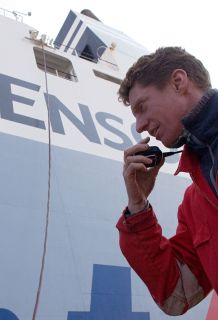Investments

Investments At quays close to a residential or industrial area, high-voltage power (6-20 kV) may often be available close at hand or within a few kilometres. In most ports there is access to electricity at different voltage levels. It is important, though, to be duly aware of issues of availability, because the costs of supplying high-voltage power can vary significantly if investment in transformer stations is required.
In assessing cost and system requirements the following cost items are generally found to be of greatest importance.
Shoreside:
- The costs of supplying high-voltage power
- Any need for transformers
- Switchboard and control panel
- The possible need for a frequency converter
- The length of underground cable conduits and canalization
Onboard:
- Transformer
- Electrical distribution system
- Switchboard and control panel
- Cable reel system (also possible on the quay, depending on design)
Power supply and frequency conversion as key factors
The two items with the greatest impact on OPS installation costs are frequency conversion and quayside supply of high-voltage power. Compared with these costs, those of underground cabling and canalization are limited, as the available literature confirms. A feasibility study on OPS use at the Rotterdam Euromax terminal cites significantly different cost estimates from those available for the port of Gothenburg.
System layout
The costs of different layouts may also vary significantly, depending on the solution chosen. The need for an onboard transformer and possible use of barges generate significant costs. While installing a low-voltage connection to a ship eliminates the need for an onboard transformer, for example, it requires a dockside crane for cable handling, thus increasing personnel costs.
The most modern solution, built in accordance with the forthcoming IEC/ISO/IEEE standard, will be a high-voltage connection to vessels.
Quayside investments
The cost of transporting electricity from a local grid to a port terminal range from US $ 300,000 to 4 million per berth, depending on port location, power demand, voltage and frequency and vessel type. A feasibility study for the Port of Rotterdam calculated € 4 million per berth, while at the Port of Gothenburg the figure was only a fraction of this (€ 255,000 for 2 berths), because of the already available high-voltage power supply, the lack of a need for a frequency converter and the limited power requirements of RoRo vessels. At the Port of Long Beach estimated costs per berth vary significantly, depending on power requirements and berth location, ranging from US $ 1 to 4 million. Studies by the Port of Amsterdam and by the European Commission indicate that investments for cruise ships are likely to be around € 6 million per berth (see library-research studies). The early Entec study commissioned by the European Commission reports costs at the lower end of the feasibility studies performed by others at a later stage.
For more information on investments costs see the OPS installed section.
Shipside investments
Costs for shipside modifications can range from US $ 300,000 to 1-2 million, depending on vessel type and size and the need for an onboard transformer. There is also a significant difference between retrofit and new-build projects, with the former sometimes costing up to 150 to 200 % of the latter.